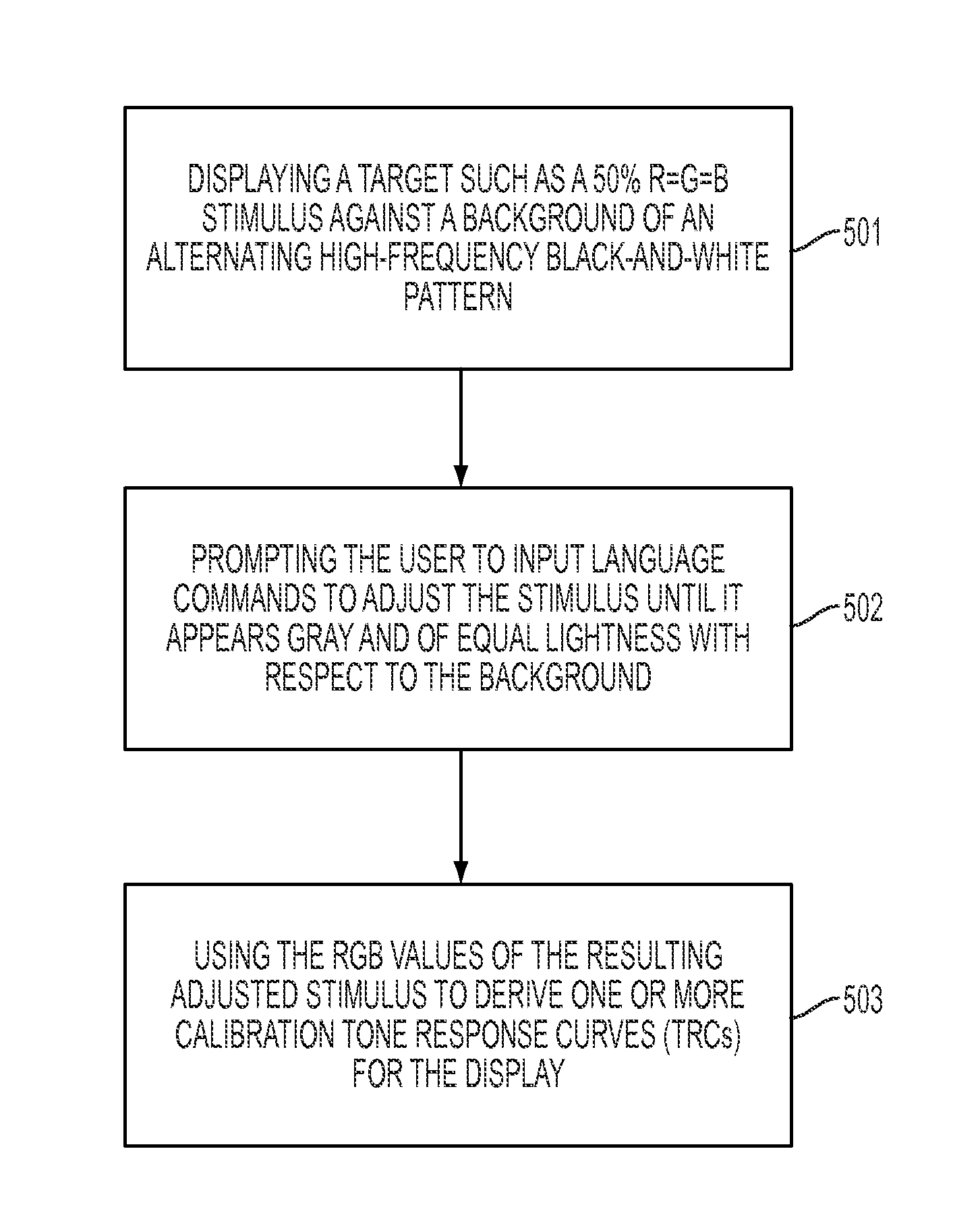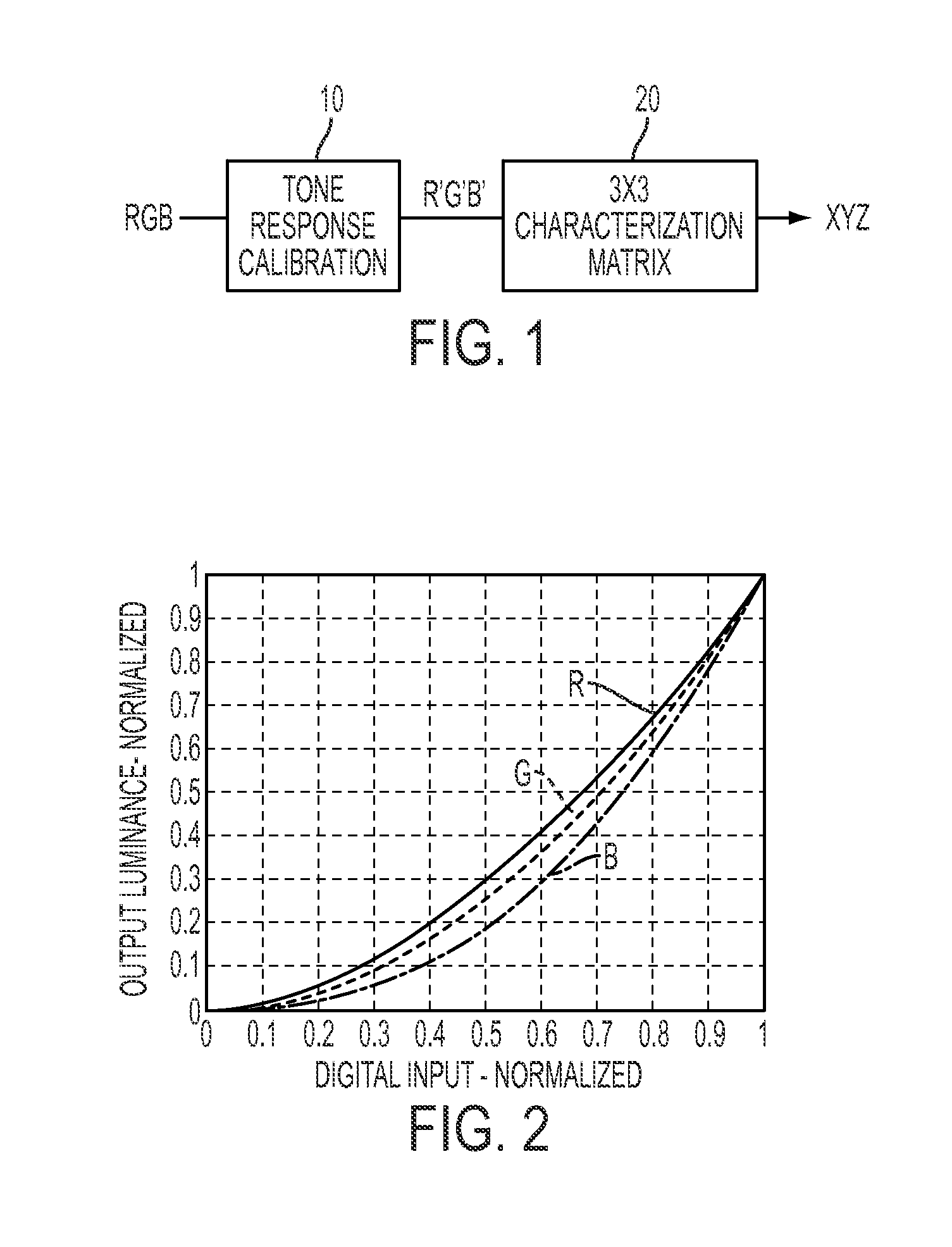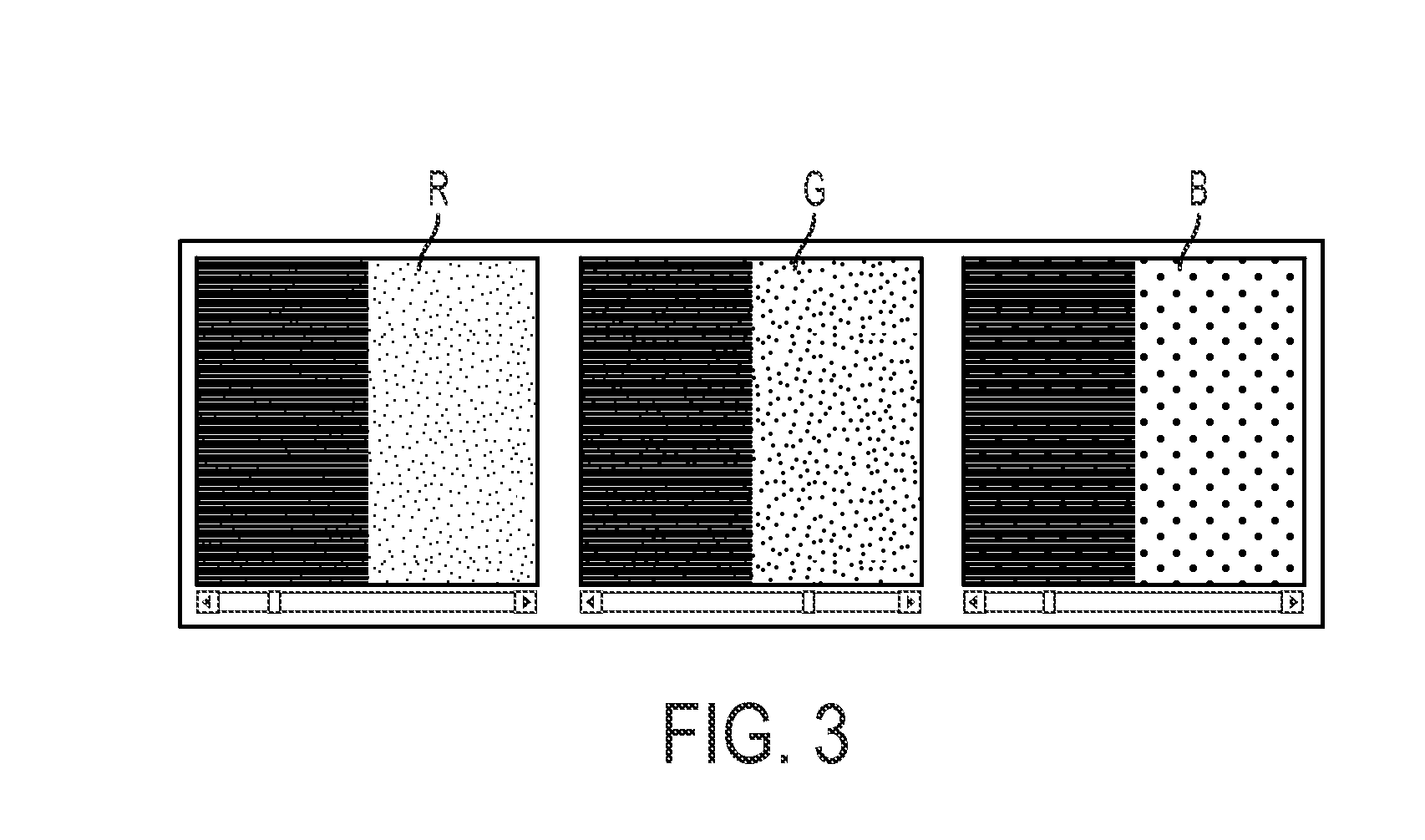Language-based color calibration of displays
- Summary
- Abstract
- Description
- Claims
- Application Information
AI Technical Summary
Benefits of technology
Problems solved by technology
Method used
Image
Examples
Embodiment Construction
[0025]Display devices generally conform to an additive color mixing model. According to this model, the relationship between RGB signals driving the device and XYZ tristimulus values produced by the display may be illustrated as shown in FIG. 1.
[0026]The first step (10) is tone response calibration, which linearizes each of the R (red), G (green), and B (blue) channels to luminance. In the second step (20), the linearized signals R′, G′, B′ are related to XYZ tristimulus values via a 3×3 characterization matrix, as determined by the colors of the R, G, B phosphors and the display white point. For greatest accuracy, both the tone calibration and the 3×3 matrix should be derived for each display. However, for many practical applications, sufficient accuracy can be achieved by deriving only the tone calibration, and using a fixed generic 3×3 characterization matrix such as the sRGB standard. As known in the art, sRGB is a standard RGB color space for use on monitors, printers, and the ...
PUM
 Login to View More
Login to View More Abstract
Description
Claims
Application Information
 Login to View More
Login to View More - R&D
- Intellectual Property
- Life Sciences
- Materials
- Tech Scout
- Unparalleled Data Quality
- Higher Quality Content
- 60% Fewer Hallucinations
Browse by: Latest US Patents, China's latest patents, Technical Efficacy Thesaurus, Application Domain, Technology Topic, Popular Technical Reports.
© 2025 PatSnap. All rights reserved.Legal|Privacy policy|Modern Slavery Act Transparency Statement|Sitemap|About US| Contact US: help@patsnap.com



